Ronald Klatz and Robert Goldman
See book keywords and concepts |
 Other food sources to check out and add to your daily menu should include whole grains, meats, grape juice, orange juice, broccoli, black pepper, thyme, and even that summertime favorite, barbecue sauce! Niacin-bound chromium is also an easily digestible form (brands include ChromeMate and Solgar GTF). However, chromium chloride, the inorganic form in which most multivitamins contain chromium, is not a particularly effective way to take your supplement.
Many anti-aging scientists generally recommend about 200 meg for adults and teenagers. Other food sources to check out and add to your daily menu should include whole grains, meats, grape juice, orange juice, broccoli, black pepper, thyme, and even that summertime favorite, barbecue sauce! Niacin-bound chromium is also an easily digestible form (brands include ChromeMate and Solgar GTF). However, chromium chloride, the inorganic form in which most multivitamins contain chromium, is not a particularly effective way to take your supplement.
Many anti-aging scientists generally recommend about 200 meg for adults and teenagers. |
Carol Simontacchi
See book keywords and concepts |
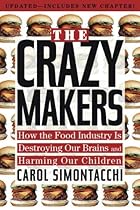 Magnesium deficiency is not uncommon,25 since it is found mainly in raw nuts and seeds, legumes, whole grains, and dark-green leafy vegetables, foods that most young American children avoid. Excessive amounts of calcium (from excessive milk drinking, for example) reduce the amount of magnesium available in the cell, so even if magnesium intake is adequate, oversupplying the body with calcium can produce the same effects as those from low magnesium. Magnesium deficiency is not uncommon,25 since it is found mainly in raw nuts and seeds, legumes, whole grains, and dark-green leafy vegetables, foods that most young American children avoid. Excessive amounts of calcium (from excessive milk drinking, for example) reduce the amount of magnesium available in the cell, so even if magnesium intake is adequate, oversupplying the body with calcium can produce the same effects as those from low magnesium. |
Artemis P. Simopoulos, M.D., and Jo Robinson
See book keywords and concepts |
 It is rich in fruits, vegetables, and whole grains, foods that will fill you up before they fill you out. Meanwhile, as you lose weight and develop a sleeker and more toned body, you will also be enjoying the flavor, texture, and health benefits of good fat. This is a program you will want to stay on for life.
The Bottom Line
• Contrary to popular belief, eating fat will not make you fat unless you also take in too many calories or eat the wrong types of fat.
• You can even lose weight on a high-fat diet-provided you cut back on calories. It is rich in fruits, vegetables, and whole grains, foods that will fill you up before they fill you out. Meanwhile, as you lose weight and develop a sleeker and more toned body, you will also be enjoying the flavor, texture, and health benefits of good fat. This is a program you will want to stay on for life.
The Bottom Line
• Contrary to popular belief, eating fat will not make you fat unless you also take in too many calories or eat the wrong types of fat.
• You can even lose weight on a high-fat diet-provided you cut back on calories. |
Zorba Paster, M.D. and Susan Meltsner
See book keywords and concepts |
 Insoluble fiber absorbs water rather than dissolving in it and is plentiful in whole grains, wheat bran, cauliflower, green beans, potatoes, and many other vegetables. It helps prevent constipation and intestinal disorders such as diverticulitis and irritable bowel syndrome.
Because foods high in either or both of these fibers are relatively low in calories and tend to be filling, eating more of them can be instrumental for maintaining a healthy weight. Insoluble fiber absorbs water rather than dissolving in it and is plentiful in whole grains, wheat bran, cauliflower, green beans, potatoes, and many other vegetables. It helps prevent constipation and intestinal disorders such as diverticulitis and irritable bowel syndrome.
Because foods high in either or both of these fibers are relatively low in calories and tend to be filling, eating more of them can be instrumental for maintaining a healthy weight. |
| Results from the Nurse's Health Study show that the foods most likely to protect you from diabetes are unsweetened high-fiber breakfast cereal and whole grains, including whole-grain breads.
• Exercise. Any increase in physical activity will make a difference.
• Weight loss if you are overweight. Simply losing ten to twenty pounds can fully control diabetes in some patients.
If these measures don't get the job done, your doctor may prescribe oral medication to help you process glucose better. |
| They are plentiful in whole grains, fruit, and veggies— things we should be consuming anyway. In supplement form, some vitamins and minerals also appear to help fight diseases associated with free-radical damage. Although more studies need to be done, the two supplements that seem most promising are:
• Vitamin E. Found in green leafy vegetables, shrimp, eggs, wheat germ, whole-grain cereal, nuts, and vegetable oils, vitamin E protects against heart disease, cutting premature heart attack rates by one-third. |
Lesley Tierra
See book keywords and concepts |
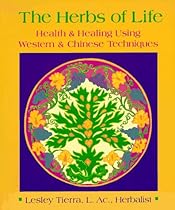 Presents a complete course in the basics of cooking whole grains and beans and learning general guidelines of healthful cooking and menu planning.
Herb Seeker Press
Laura Clavio, P.O. Box 299W, Battle Ground, IN 57920, 1-317-567-2884.
Distributes herbal and garden videos.
Herbal Audio Cassettes
East West by Lesley and Michael Tierra
East West Herb School, P.O. Box 712, Santa Cruz,
CA 95061
A set of 24 one-hour audio cassettes comprising lectures on various topics relating to the study of herbal medicine, diagnosis and nutrition. Presents a complete course in the basics of cooking whole grains and beans and learning general guidelines of healthful cooking and menu planning.
Herb Seeker Press
Laura Clavio, P.O. Box 299W, Battle Ground, IN 57920, 1-317-567-2884.
Distributes herbal and garden videos.
Herbal Audio Cassettes
East West by Lesley and Michael Tierra
East West Herb School, P.O. Box 712, Santa Cruz,
CA 95061
A set of 24 one-hour audio cassettes comprising lectures on various topics relating to the study of herbal medicine, diagnosis and nutrition. |
| WHOLE FOODS
Healthy
Unhealthy whole grains beans
vegetables, especially organic sea vegetables seeds, nuts greens a little sea salt as needed a little honey, maple syrup or grain syrup as needed fruit in season, baked, if needed salads in season a little bit of meat as needed (optional) small amounts of dairy white sugar white flour white bread "junk foods"
additives preservatives refined salt artificial colorings chemicals in foods
soda pop
any sweets with white sugar in them tobacco, caffeine
Food should never be cooked in aluminum pots and pans. |
Bradley J. Willcox, D. Craig Willcox, and Makoto Suzuki
See book keywords and concepts |
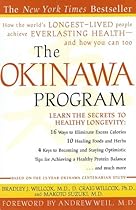 We spoke at length about whole grains earlier in the previous chapter. If you have been eating lots of white bread, white bagels, white buns and rolls, and other bakery goods made from bleached flour, you are getting little fiber and setting yourself up for lots of problems, including hemorrhoids and diverticulosis (small outpouchings of the colon from a low-fiber diet). We spoke at length about whole grains earlier in the previous chapter. If you have been eating lots of white bread, white bagels, white buns and rolls, and other bakery goods made from bleached flour, you are getting little fiber and setting yourself up for lots of problems, including hemorrhoids and diverticulosis (small outpouchings of the colon from a low-fiber diet). |
Carol Simontacchi
See book keywords and concepts |
 While we are still arguing over how much protein the average American eats, we certainly eat far less seafood, far less wild game, far fewer legumes and whole grains, far fewer greens, far less of anything our ancestors ate. Unless pregnant moms are supplementing their diets with high-quality protein, consuming at least twenty percent more protein than before they became pregnant, they may not be able to provide their baby with the amino acid building blocks for a healthy brain. While we are still arguing over how much protein the average American eats, we certainly eat far less seafood, far less wild game, far fewer legumes and whole grains, far fewer greens, far less of anything our ancestors ate. Unless pregnant moms are supplementing their diets with high-quality protein, consuming at least twenty percent more protein than before they became pregnant, they may not be able to provide their baby with the amino acid building blocks for a healthy brain. |
Bradley J. Willcox, D. Craig Willcox, and Makoto Suzuki
See book keywords and concepts |
 They eat at least three servings of Japanese white (sticky) rice, supplemented by whole grains such as buckwheat noodles (soba) and wheat noodles (udon). Rice is the most commonly eaten single food in Okinawa. The only room for improvement here is eating more brown rice rather than white, since it contains more nutrients and more fiber and is lower on the Glycemic Index (more on this later).
Guideline 4: Make complex carbohydrates the basis of the diet (more than 55 percent of total calories) and limit simple sugars (table sugars). The elders hit this one almost right on the nose. They eat at least three servings of Japanese white (sticky) rice, supplemented by whole grains such as buckwheat noodles (soba) and wheat noodles (udon). Rice is the most commonly eaten single food in Okinawa. The only room for improvement here is eating more brown rice rather than white, since it contains more nutrients and more fiber and is lower on the Glycemic Index (more on this later).
Guideline 4: Make complex carbohydrates the basis of the diet (more than 55 percent of total calories) and limit simple sugars (table sugars). The elders hit this one almost right on the nose. |
Carol Simontacchi
See book keywords and concepts |
 During World War I and World War II, when people often couldn't afford such luxuries as sugar and white flour, or these foods were restricted by the government, they resorted to eating fresh vegetables, whole grains, and limited amounts of beef. Researchers found that the incidence of chronic disease and death dropped during these periods of deprivation.
The Danes enjoyed a diet rich in pork and dairy products. During World War I and World War II, when people often couldn't afford such luxuries as sugar and white flour, or these foods were restricted by the government, they resorted to eating fresh vegetables, whole grains, and limited amounts of beef. Researchers found that the incidence of chronic disease and death dropped during these periods of deprivation.
The Danes enjoyed a diet rich in pork and dairy products. |
Bradley J. Willcox, D. Craig Willcox, and Makoto Suzuki
See book keywords and concepts |
 Unrefined complex carbohydrates are "whole" carbs and include fruit, vegetables, and whole grains with their natural fiber intact. They enter the bloodstream slowly, raise the blood sugar slowly, offer solid nutrition, and keep us healthy.
The health effects of recent dietary changes in the Okinawan population can be seen most clearly in Okinawans aged less than 50 years, who eat a much more Western diet—much higher fat and lower in carbohydrates—than the elders. They eat too many calories and engage in too little activity. Unrefined complex carbohydrates are "whole" carbs and include fruit, vegetables, and whole grains with their natural fiber intact. They enter the bloodstream slowly, raise the blood sugar slowly, offer solid nutrition, and keep us healthy.
The health effects of recent dietary changes in the Okinawan population can be seen most clearly in Okinawans aged less than 50 years, who eat a much more Western diet—much higher fat and lower in carbohydrates—than the elders. They eat too many calories and engage in too little activity. |
Mark Bricklin
See book keywords and concepts |
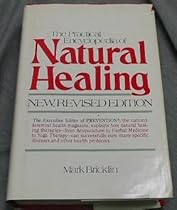 That seemed to make sense, because if the colon is very sensitive, why stress it with high-residue foods like fruit, raw vegetables and whole grains? Indeed, during the acute phases of diverticulitis, ulcerative colitis or any other condition in which the bowel is markedly inflamed, a low-residue diet may be necessary. Once the crisis has passed, however, the addition of bulk agents to the diet is the current preferred method of treatment to put the bowel in shape again. That seemed to make sense, because if the colon is very sensitive, why stress it with high-residue foods like fruit, raw vegetables and whole grains? Indeed, during the acute phases of diverticulitis, ulcerative colitis or any other condition in which the bowel is markedly inflamed, a low-residue diet may be necessary. Once the crisis has passed, however, the addition of bulk agents to the diet is the current preferred method of treatment to put the bowel in shape again. |
| They included whole grains or grain cereals and breads, starchy vegetables like corn, beans and peas, and other vegetables and fruits.
Researchers divided the patients into three groups. The first group had been taking IS to 20 units of insulin daily. Nine of these ten patients were able to discontinue their insulin therapy on the high-fiber diet. Most of them also developed lower fasting and after-meal glucose levels.
The second group had been taking between 22 and 34 units of insulin daily. |
| Work more whole wheat bread and other whole grains into your diet. They're good sources of selenium, fiber, nonmeat protein and possibly other goodies that may be eliminated in the refining process.
19. Employ the principle of optimization. Look for foods, recipes and meals that combine many of the protective factors, while having few negative factors. Broccoli, for instance, is a super source of vitamins A and C and a member of the cruciferous family, and has good fiber as well. |
| Nuts, seeds and whole grains such as wheat and corn, as well as wheat germ and lecithin, also supply polyunsaturates. But please remember this: Putting a tablespoon of vegetable oil on your salad may not do you all that much good if the rest of your dinner consists of a big fatty steak, a baked potato topped with sour cream, and apple pie and ice cream for dessert.
The Unlikely Hero of the Heart: Fish Oil
There is one kind of polyunsaturated oil that may be especially protective against heart attacks—yet, you'd never want to sprinkle it over your beautiful fresh spinach salad. Fish oil. |
| Food sources of vitamin B6 include whole grains, bananas, peanuts, tomatoes, poultry, salmon and organ meats. A commonsense supplemental level would be between 10 and 25 milligrams a day.
Reduce or Eliminate These Negatives
Smoking: Yours and His • Smoking is the worst thing you can do for your heart. But you already know that. What you probably don't know is that not smoking can hurt you, too—if the guy sitting over there is doing the dirty deed. It's called "passive smoking," meaning that you're inhaling the fumes of someone else's butt. |
| Stated in the simplest and broadest terms, a protective diet is one consisting largely of whole grains, fresh fruits and vegetables, and perhaps moderate amounts of fish and seafood. There is a bit more to it than that, as we shall soon see, but I want you to know at the outset that a diet high in protective factors does not require you to eat exotic or expensive foods. The protectors are all familiar friends, foods that you are used to: What the new research suggests is that by eating more of them (and less of the negative foods), resistance to cancer may be accordingly increased. |
Ronald Klatz and Robert Goldman
See book keywords and concepts |
 Hence, fresh fruits and vegetables, whole grains, nuts, seeds, and legumes are all good sources of fiber.
Fiber is also an important part of the human digestive process. It gives volume to the food we ingest, so that our intestines can more easily pass along their contents. Both absorption of nutrients and the elimination of waste are eased by fiber, with consequent benefits to your intestines.
There are many different types of fiber, and your body will benefit from absorbing some of each. Hence, fresh fruits and vegetables, whole grains, nuts, seeds, and legumes are all good sources of fiber.
Fiber is also an important part of the human digestive process. It gives volume to the food we ingest, so that our intestines can more easily pass along their contents. Both absorption of nutrients and the elimination of waste are eased by fiber, with consequent benefits to your intestines.
There are many different types of fiber, and your body will benefit from absorbing some of each. |
Gale Maleskey
See book keywords and concepts |
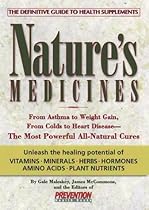 Experts also say that you should eat a low-fat diet, including lots of fruits and vegetables, whole grains, and legumes. Moreover, they say that men who smoke will just have to quit. Puffing just two cigarettes a day causes blood vessels throughout your entire body to constrict, reducing blood flow to the penis.
Alcohol is another roadblock to satisfying sex. Drink no more than two alcoholic beverages a day, says E. Douglas Whitehead, M.D. Experts also say that you should eat a low-fat diet, including lots of fruits and vegetables, whole grains, and legumes. Moreover, they say that men who smoke will just have to quit. Puffing just two cigarettes a day causes blood vessels throughout your entire body to constrict, reducing blood flow to the penis.
Alcohol is another roadblock to satisfying sex. Drink no more than two alcoholic beverages a day, says E. Douglas Whitehead, M.D. |
Bradley J. Willcox, D. Craig Willcox, and Makoto Suzuki
See book keywords and concepts |
 The grain section should emphasize whole grains.
In light of these observations and data compiled in our Okinawa study, we created our own pyramid based on the East-West chample, or fusion diet, of the Okinawans to make up for the shortcomings in the US DA Food Pyramid.
Choosing your daily servings based on the Okinawa Food Pyramid gives you a general guide for healthy eating. If you combine this with the exercises and lifestyle changes that we recommend in subsequent chapters, you will have chosen a way of life that will put you on the path to everlasting health. The grain section should emphasize whole grains.
In light of these observations and data compiled in our Okinawa study, we created our own pyramid based on the East-West chample, or fusion diet, of the Okinawans to make up for the shortcomings in the US DA Food Pyramid.
Choosing your daily servings based on the Okinawa Food Pyramid gives you a general guide for healthy eating. If you combine this with the exercises and lifestyle changes that we recommend in subsequent chapters, you will have chosen a way of life that will put you on the path to everlasting health. |
Stanley W. Jacob, M.D.
See book keywords and concepts |
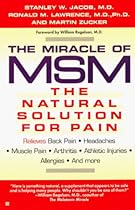 We don't eat enough whole grains, fruits, and vegetables— excellent sources of vitamin B6 and folic acid. Instead, we eat enormous amounts of refined, denuded grains, and consume considerable quantities of sugar-laden foods and animal protein, which deplete the body of B complex vitamins, particularly B6.
Other reasons for problems with methionine include the aging process. Nutrient levels tend to decline with age as the body becomes less efficient. We know that many vitamins and minerals—including B6 and folic acid—are present in lower quantities in the elderly than in younger people. We don't eat enough whole grains, fruits, and vegetables— excellent sources of vitamin B6 and folic acid. Instead, we eat enormous amounts of refined, denuded grains, and consume considerable quantities of sugar-laden foods and animal protein, which deplete the body of B complex vitamins, particularly B6.
Other reasons for problems with methionine include the aging process. Nutrient levels tend to decline with age as the body becomes less efficient. We know that many vitamins and minerals—including B6 and folic acid—are present in lower quantities in the elderly than in younger people. |
J. Robert Hatherill
See book keywords and concepts |
 Estrogen-lowering foods include: legumes, whole grains, berries, broccoli, and brussels sprouts.
Soy Protein
Soy proteins have shown exciting beneficial effects for both men and women. Soy protein is at the forefront of warding off breast cancer. A study in Singapore confirmed that a mere morsel of soy (55 mg/day) crushed breast cancer rates by 50 percent. Soy protein has also been shown to reduce lung cancer in China and prostate cancer in Japan. The Japanese consume soy daily in the form of tofu, soy milk, and fermented soy products such as miso. Estrogen-lowering foods include: legumes, whole grains, berries, broccoli, and brussels sprouts.
Soy Protein
Soy proteins have shown exciting beneficial effects for both men and women. Soy protein is at the forefront of warding off breast cancer. A study in Singapore confirmed that a mere morsel of soy (55 mg/day) crushed breast cancer rates by 50 percent. Soy protein has also been shown to reduce lung cancer in China and prostate cancer in Japan. The Japanese consume soy daily in the form of tofu, soy milk, and fermented soy products such as miso. |
| HEALTH BENEFITS OF FOLIC ACID prevents neural tube and cleft palate defects required for DNA manufacture and repair critical for a healthy heart and vessels may reduce risk of cancers of the uterus, cervix, intestine, colon, and lungs may reduce risk of chromosome defects
Niacin is found in many foods like whole grains and peanuts.
The RDA of niacin is 20 milligrams for adults.
High doses of niacin in the form of nicotinic acid have been used to treat people with high cholesterol. |
Brenda Davis and Tom Barnard
See book keywords and concepts |
 Joint World Health Organization (WH0)/Food and Agriculture Organization (FA0) of the United Nations Expert Consultation on Diet, Nutrition, and the Prevention of Chronic Diseases (2002)
(grams)
(grams)
(% of total fat)
Cheeseburger, double patty, 1
44.0
18.0
41%
Ribs, 3 oz. (85 g)
26.1
10.8
41%
Ice cream, regular, 1 cup (250 mL)
14.6
9.0
62%
Pork chops, 3 oz. (85 g)
21.1
7.9
37%
Steak, T-bone, 3 oz. (85 g)
18.8
7.4
39%
Fried chicken, 2 pieces
27.0
7.1
27%
French fries, large
31.0
6.5
21%
Extra-lean ground beef, 3.5 oz. (100 g)
16.3
6. Joint World Health Organization (WH0)/Food and Agriculture Organization (FA0) of the United Nations Expert Consultation on Diet, Nutrition, and the Prevention of Chronic Diseases (2002)
(grams)
(grams)
(% of total fat)
Cheeseburger, double patty, 1
44.0
18.0
41%
Ribs, 3 oz. (85 g)
26.1
10.8
41%
Ice cream, regular, 1 cup (250 mL)
14.6
9.0
62%
Pork chops, 3 oz. (85 g)
21.1
7.9
37%
Steak, T-bone, 3 oz. (85 g)
18.8
7.4
39%
Fried chicken, 2 pieces
27.0
7.1
27%
French fries, large
31.0
6.5
21%
Extra-lean ground beef, 3.5 oz. (100 g)
16.3
6. |
James Braly M.D. and Ron Hoggan M.A.
See book keywords and concepts |
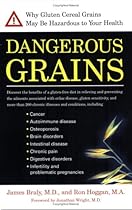 It's been known for years that certain whole grains (wheat, rye, barley spelt, triticale, kamut, and possibly oat] are the cause of celiac disease. This intestinal-tract disease can vary from mild (gas, bloating, loose stools) to life threatening (malabsorption, weight loss, malnutrition) and is preventable/treatable by completely eliminating all of the aforementioned grains from the diet. But isn't celiac disease rare? Less than one in one hundred Americans are diagnosed with this problem. Why should the rest of us worry? It's been known for years that certain whole grains (wheat, rye, barley spelt, triticale, kamut, and possibly oat] are the cause of celiac disease. This intestinal-tract disease can vary from mild (gas, bloating, loose stools) to life threatening (malabsorption, weight loss, malnutrition) and is preventable/treatable by completely eliminating all of the aforementioned grains from the diet. But isn't celiac disease rare? Less than one in one hundred Americans are diagnosed with this problem. Why should the rest of us worry? |
| Therefore, by eating whole grains we decrease the availability of those dietary minerals that help us grow and maintain strong, healthy bones.
GLUTEN, VITAMINS, AND BONE HEALTH
Further, grain consumption often displaces fruits and vegetables that are good sources of some important vitamins needed to keep our bones healthy. Vitamin C contributes to bone maintenance by aiding in the production of collagen. |
Dr. Vern Cherewatenko and Paul Perry
See book keywords and concepts |
 Opt, instead, for whole grains. In general, get 50 to 60 percent of your total calories from carbohydrates.
Despite what you may have heard, how quickly glucose gets into your body depends not only on the type of carbohydrates you've eaten, but on several factors, including:
• Amount eaten.
• How foods are cooked or prepared
• Other foods eaten at the same time.
That's true even though simple sugar and complex carbohydrates are digested at the same rate, because their overall digestion may be slowed by fat present in the food. Opt, instead, for whole grains. In general, get 50 to 60 percent of your total calories from carbohydrates.
Despite what you may have heard, how quickly glucose gets into your body depends not only on the type of carbohydrates you've eaten, but on several factors, including:
• Amount eaten.
• How foods are cooked or prepared
• Other foods eaten at the same time.
That's true even though simple sugar and complex carbohydrates are digested at the same rate, because their overall digestion may be slowed by fat present in the food. |
| Examples include whole grains and wheat bran.
The average American diet contains only about 10 to 20 grams of dietary fiber per day. If you have diabetes, it's a good idea to work toward gradually increasing your fiber intake to 25 to 50 grams per day. Increasing the fiber in the diet too rapidly may result in excess gas, cramping, bloating, and diarrhea. Adequate fluid intake—six to eight eight-ounce glasses per day—is also important when fiber is increased.
Salt Is Everywhere
Sodium—salt—is everywhere, and the average American eats 5,000 milligrams per day. |












